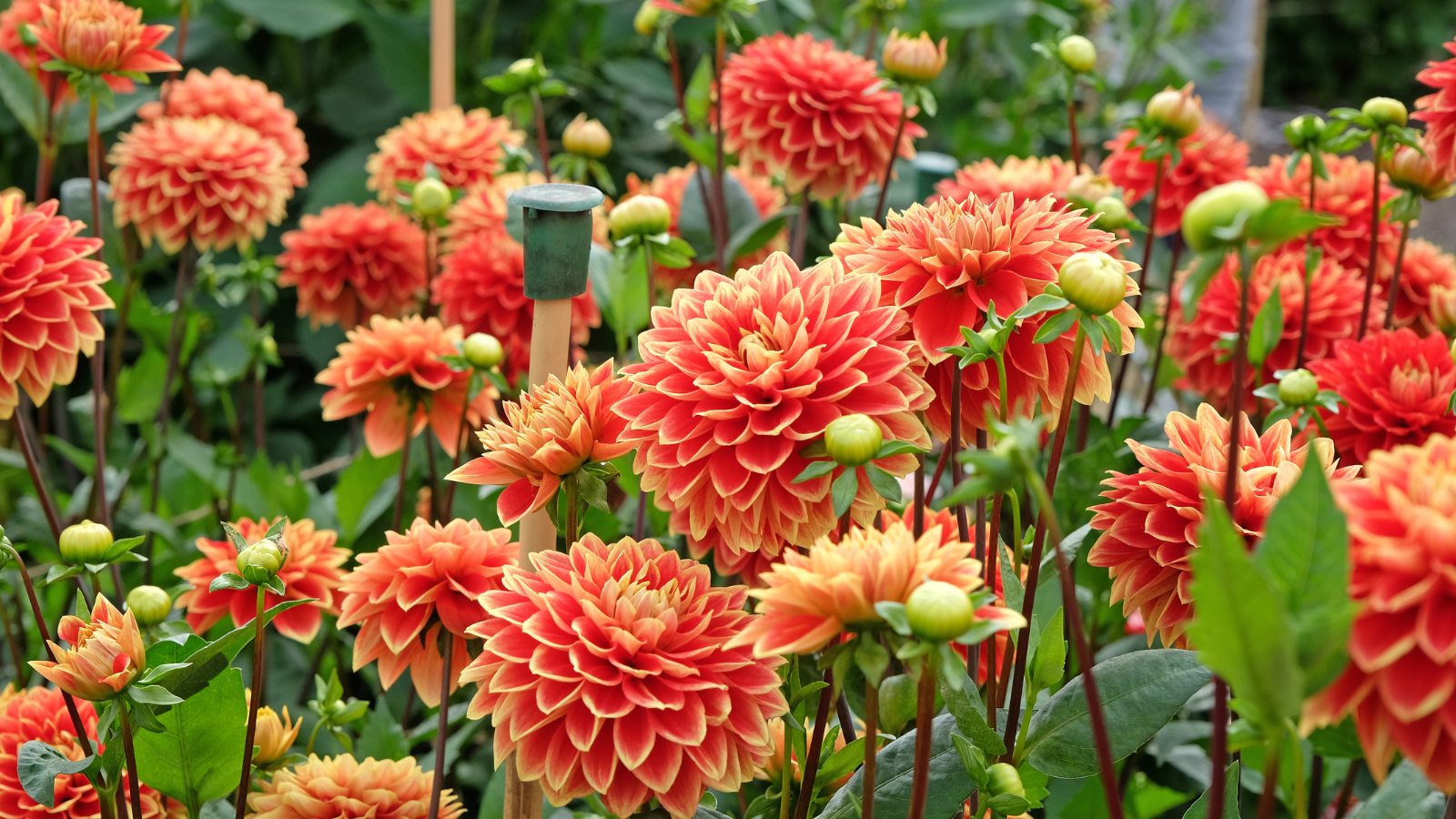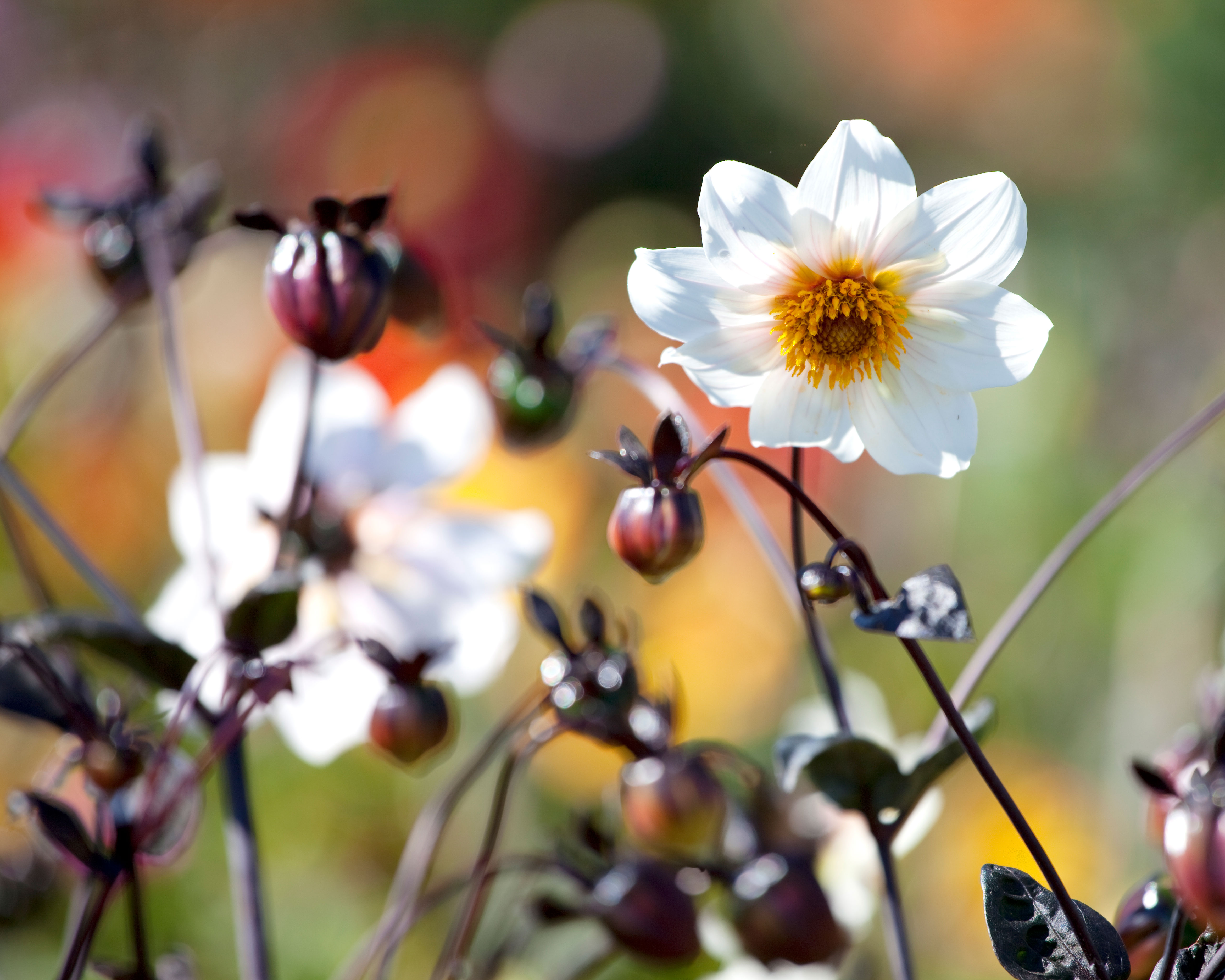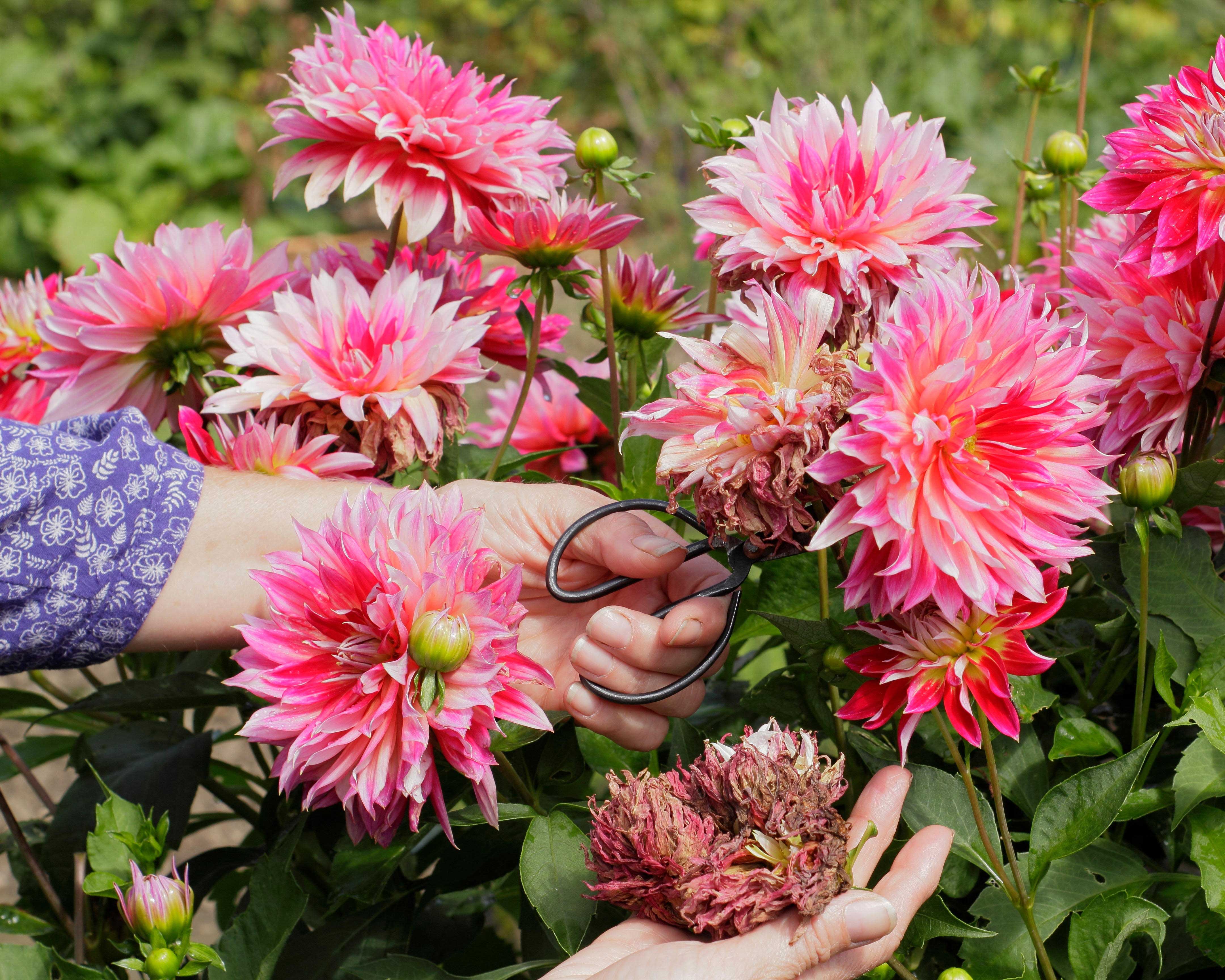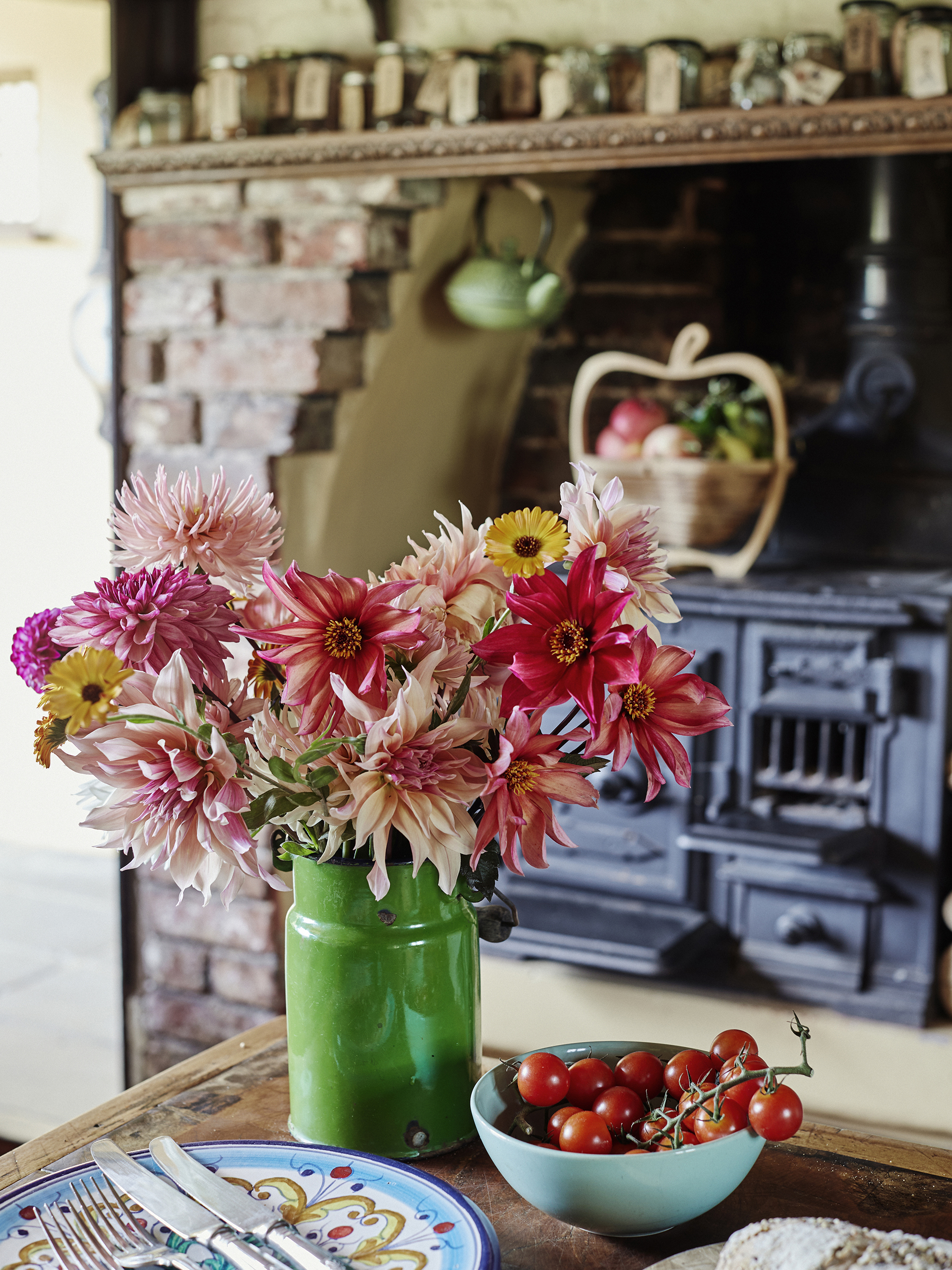How to deadhead dahlias – and keep these sensational blooms flowering well into the fall
Discover exactly when and how to deadhead these fall favorites for even more glorious blooms


Dahlias are the undeniable superstars of the summer flower bed, and knowing how to deadhead them is crucial for keeping these showy and flamboyant blooms flowering for longer.
There is such a wide variety of dahlias to enjoy, coming in a vast array of colors, varying flower sizes and shapes, multi-colored blooms or dark foliage cultivars. Growers across the world continue to introduce new variations and color shades to keep up with the trends – in fact, the range of sizes and colors is practically unmatched in the world of flowers. And the good news is that with the right care and attention, dahlias can keep flowering from summer into winter.
Once you learn how to grow dahlias and see the first blooms unfurl you'll soon become obsessed with them. So, to keep dahlias blooming for longer, discover exactly when and how to deadhead dahlias with tips from an expert dahlia grower.
What we mean by deadheading dahlias

Deadheading dahlias involves only removing the spent flower heads and buds. This does not harm the plant. Instead, by removing the dying blooms, you encourage the plant to put its energy into root and flower development.
'Unless you’re leaving seedpods to mature on the plants for breeding purposes or collecting seeds, be sure to remove any spent blooms so that the plants continue to put energy into flower production rather than making seeds,' explains expert flower grower Erin Benzakein, author of Floret's Farm's Discovering Dahlias, available on Amazon. 'This practice is an important ritual in the cutting garden if you want a steady stream of beautiful blooms for the longest amount of time.'

Erin Benzakein is the founder and owner of Floret Flowers. With her husband Chris, she has spent the last 15 years building the family-run flower farm and seed company from the ground up in the fertile Skagit Valley of Washington State. Erin is considered one of the most influential farmer-florists. She has shaped floral design trends, redefined small-scale farming, and inspired others to grow, buy, and share seasonal flowers.
How to deadhead dahlias

As with deadheading or pruning any flowers, make sure you have the correct equipment to hand so as to avoid damaging the plants. 'You will need a sharp knife or pruning shears, such as these soft grip Fiskars pruners from Amazon, to deadhead dahlias,' explains Rachel Bull, Head of Gardens at H&G, and cut flower grower.
Once your dahlias begin to bloom, it's good practice to inspect the flowers at least once a week to check if there are any dead or dying flowers. Remove flowers as they begin to wilt and any that have completely wilted and are beginning to form seed pods.
Design expertise in your inbox – from inspiring decorating ideas and beautiful celebrity homes to practical gardening advice and shopping round-ups.
You'll soon find when learning how to deadhead dahlias that it's easy to identify spent blooms, where the petals are wilting and starting to fall off. However, if you miss this stage, it isn't always as easy to identify which buds you should deadhead and which are on their way to producing blooms.
'It can be tricky to tell spent buds from new ones sometimes. The key is in the bud shape. If it’s pointed and a bit squishy it has gone over; if it is round and perky, it is a new bud,' explains Rachel.
After you’ve identified which flowers are wilting or buds you need to deadhead, then using a pruner, cut the flower stem as its intersection to a leaf. This will promote more blooms and avoid the sight of flowerless stems sticking out all over the place.

Rachel is a gardening editor, flower grower and floral designer. Her journalism career began on Country Living magazine, sparking a love of container gardening and wild planting. After more than a decade writing for and editing a range of consumer, business and special interest titles, Rachel became editor of floral art magazine The Flower Arranger. She then trained and worked as a floral designer and stylist in London for six years, before joining the Homes & Gardens team.
The ideal time to deadhead dahlias

The exact time of year for deadheading dahlias will depend on when they start blooming, which will differ depending on the hardiness zone where you live.
Once you see flower blooms have wilted and buds are spent, you know it's time to begin deadheading. It's a good idea to begin deadheaded dahlias every week to keep them blooming, although in high season this can increase to every few days.
Where to deadhead dahlias if a stem has more than one bloom

The tricky part of deadheading dahlias is when there are multiple heads on one stem. If one of the flowers has gone over you have two choices: you can either take off the dead flower by cutting back to the bud joint, leaving the other buds to bloom, or, you can make the decision to cut further back down the stem at the next set of leaves.
'If the flower stems are short, I tend to cut the dahlia back further down the stem to encourage longer new shoots for cutting to create a summer flower display. Having one of the short flowers cut off from a three-headed flower stem might not look great in a vase,' says Rachel. 'But if you are growing dahlias for color in the border for garden color schemes, then this may not be an issue.'
FAQs
Are there other ways I keep my dahlias blooming?
The best way to keep your dahlias blooming is to deadhead spent blooms regularly, and also cutting flowers for floral displays around the house, which will encourage your plants to produce more blooms.
'Like any plants, dahlias are prone to bacterial, viral, and fungal diseases when stressed,' explains expert flower grower Erin Benzakein, so make sure you keep your plants happy and healthy, by planting in the right spot, allowing lots of airflow and caring for and watering them correctly. Where you do encounter pests or diseases, 'I advise using organic methods as much as possible. Growing naturally takes more effort and attention, but pays off in the quality of the flowers,' Erin adds.
Dahlias make wonderful cut-and-come-again blooms if you're planning a cut flower garden because they flower for months on end. Deadheading and picking these invaluable late summer flowers regularly encourages them to keep producing more flowers right up to the first frosts.
Rachel is senior content editor, and writes gardening content for homesandgardens.com, Homes & Gardens magazine, and its sister titles Period Living Magazine and Country Homes & Interiors. She has written for lifestyle magazines for many years, with a particular focus on gardening, historic houses and arts and crafts, but started out her journalism career in BBC radio, where she enjoyed reporting on and writing programme scripts for all manner of stories. Rachel then moved into regional lifestyle magazines, where the topics she wrote about, and people she interviewed, were as varied and eclectic as they were on radio. Always harboring a passion for homes and gardens, she jumped at the opportunity to work on The English Home and The English Garden magazines for a number of years, before joining the Period Living team.
